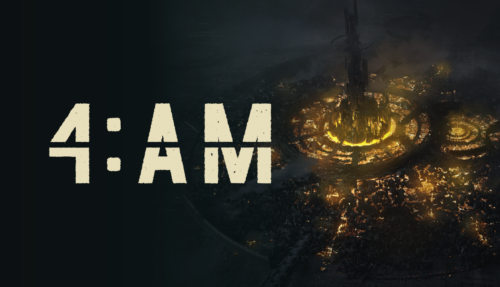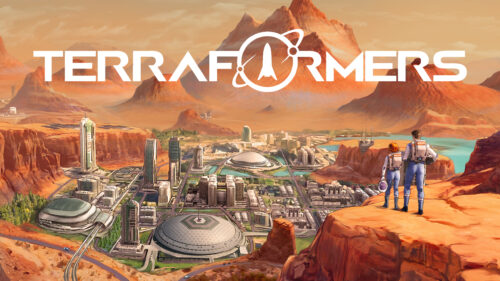Sound Design and Music for Fates

Those Beyond is a team of gaming industry veterans, designers, writers, and technologists. With a clear vision for this immersive experience, which they dubbed “Massively Interconnected Entertainment”, we set about making it come to life with sound.
The Challenge
Creating sound design for video games can be a challenging task because it involves a lot of different elements and considerations. One of the main difficulties is that the sound design must fit the theme and atmosphere of the game, which can be a complex task depending on the game’s genre and setting. In addition, the sound design must be consistent with the game’s art style and overall aesthetic.
Another challenge is that the sound design needs to be dynamic and responsive to the actions of the player, which requires a lot of careful planning and coordination. Finally, the sound design must be optimized for the game’s performance and not strain the system’s resources, which can be a challenge when working with large and complex game worlds.
“With a deep lore already set in place, we had to make sure that everything we did supported the narrative of the game.”

“Fates” was no exception. With a deep lore already set in place, we had to make sure that everything we did supported the narrative of the game.
The music in the game is needed to effectively convey the emotions and mood of the game world and guide players toward certain feelings and actions.
The sound design was responsible for making the game world feel immersive and believable by adding sounds to all the details of the environment, thereby contributing to the overall world-building of the game.
We wanted to work with the extremes in sound design in order to create a unique and immersive experience for the player. This involved using a wide range of techniques to create both big, hyper-realistic sounds and small, subtle ambient details. This required a lot of creativity, experimentation, and attention to detail in order to carefully balance and blend the various sounds together. We wanted the sound in the game to feel gritty and emotional, rather than the typical sleek and futuristic sound that is often associated with sci-fi games.
With sound design occupying the extremes of the soundscape, we wanted the music to occupy “the middle”. By doing this, we could ensure that both sound design and music got the attention that they deserved while also making sure that no area was oversaturated with sound.

To make this vision come to life, we assembled this team;
Frederik Max – Audio Lead/Sound Designer
Anton Sherar – Music Composer/Implementation
Adam Blinkenberg Koch – Music Composer
How did we do it? Let’s get into it!
The Art of Creating a Soundscape
Our first step was to immerse ourselves in the game’s universe, reading through the extensive lore and getting to know the various characters, cultures, and locations that players would encounter. This helped us get a sense of the game’s overall tone and aesthetic, as well as the specific sound design needs of each area and character.
Adam had this to say about how the extensive lore influenced the music;
“Fates seemed like the perfect project. The drafts and moodboards looked very cinematic and dystopic, and I was really intrigued by the overall look and story, and excited about composing something in the same style.“
“Our goal was to create a detailed environment, with lots of subtle details, that felt both believable but still otherworldly.”

Next, we began sketching out the overall soundscape of the game. We worked with the Those Beyond team to establish the general sonic palette that would be used throughout the game, thereby laying the foundations of a clear audio direction and identity. This involved deciding on the stylistic direction and which elements should be highlighted in the soundscape. We did this by creating short demos of the music and sound design to make it easy to evaluate and make sure that we understood the lore behind the game.
As we moved into the more detailed stage of sound design, our focus was on creating a sense of immersion and believability within the game world. This involved creating a wide range of sound effects for both UI and environments.
Our goal with the UI sounds was to create a sense of realism and tactility, as if the user were actually pressing physical buttons rather than interacting with a digital interface. To achieve this, we recorded the sounds of buttons and other materials. As we still wanted to retain some of that sci-fi feel we also applied techniques such as pitch shifting, layering, and stretching to give the sounds some unique qualities that are unheard of in real life.
Frederik had this to say about creating the UI sound effects;
“First of all we had to make sure that all UI sounds made sense in relation to each other, both in terms of sound but also in terms of raw communication. Making sure that there were clear counterparts and a logical relationship between sounds was essential. The challenge is having the relationships in place while still making the sound unique and non-generic.”
Environmental sounds also played a huge part in making the world come to life. Our goal was to create a detailed environment, with lots of subtle details, that felt both believable and still otherworldly.
Frederik had this to say about creating the environmental sound effects;
“We wanted to ground the players in a believable world, but still make it feel otherworldly and somewhat foreign. If you listen to the intro scene for example, you’ll hear rain & wind but you’ll also hear weird sounds emanating from the orb in the middle. This mixture is what really sets up the environmental sounds. Along with small subtle spatialized details.”
“In the end, we were able to create a fully realized, immersive audio experience that truly brought the game’s world to life for players.”
At the same time, we began the music composition process to create a dynamic and emotionally charged score that would enhance the gameplay experience and complement the game’s narrative arcs. This involved writing a variety of music tracks that could be used in different areas of the game and during different gameplay moments.
Anton says this about his approach to writing and implementing the music;
“I was extremely excited about getting the chance to contribute to the world-building through interesting motifs and music themes. From the start, I knew that I wanted my approach regarding the role of the music to be different than what is usually expected in a video game. So I built a music system that plays the music semi-randomly, and the music itself was of a more ambient nature, meaning that I was going for a feeling and vibe more than a melody necessarily. From seeing the early concepts to the final look and feel of the game, I’m excited about the many stories this world can tell, and how it can be translated into music.”
Take a listen to one of the music tracks from the game here:
Our overall goal for the music was to make it non-obtrusive but highlight it in specific areas of the game to give those scenarios more emotional weight. The feeling of loneliness and melancholy was prevalent in the music, but we always incorporated some aspect of hopefulness to balance it out.
One way we did this was to not stick to major or minor but use a tonal center instead, in this case, note C. The tonal center is the pitch around which the other pitches in the music revolve. It is a central point of reference that gives a piece of music its tonal coherence and direction.
For example (getting a bit nerdy and technical here), if the tonal center would be the pitch C, then other pitches in the piece, such as G, Eb, F, D#, and A, will relate to and revolve around the pitch C. That pitch serves to establish the “key” of the music and gives a sense of arrival and resolution.
Basically, this gave us the flexibility to quickly move in and out of certain feelings (scales, chords) without needing to stick or adhere to their musical “ruleset”.
Adam had this to say about his approach to composing the music;
“I approached it in different ways. Some of the music was composed in a linear, cinematic way, fitting the exact event in the game. But a great part of the music was structured around a circular flow, where different instruments could enter or exit the music with the overall structure still being unchanged.”
Anton expands on Adam’s point;
“The biggest challenge was finding a sound that supports the various planets, systems and asteroids in the game. Besides this, getting a good balance with the sound effects of the game is always a challenge in a dynamic medium such as videogames, where you give the player a lot of agency to ‘mess things up’.”
Take a listen to another one of the music tracks from the game here:
Overall, the sound design and music composition for “Fates” was a challenging and rewarding process that required us to think creatively and push the boundaries of audio design. In the end, we were able to create a fully realized, immersive audio experience that truly brought the game’s world to life for players. We’re excited for players to experience the soundscape we’ve created for this innovative and narrative-driven game.
A big thank you goes out to the Those Beyond team for a good collaboration and an exciting opportunity!

Words from Client
“We started working with the Sonic Minds team early; knowing how essential that sound design was going to be to elevate our project quality. Sonic Minds were the perfect choice for us. From the outset, we knew we did not want FATES to fall into standard or familiar sci-fi territory; we wanted the experience of sound design to be unique, immersive and nuanced — keeping player engaged and excited throughout the experience, whilst also adding a tonal, emotional layer. After all, in FATES our players [are] fleeing, leaving Earth forever! It’s an emotional journey. We wanted players to share this sentiment of heading into the unknown; it’s daunting and dramatic, but also a new adventure — uplifting in its own kind of way.
Sonic Minds worked with us thoroughly to deliver our vision; and were delicate, professional and incredibly adept at translating our vision from early concepts to final results. We were incredibly impressed at their ideation process as their enthusiasm was infectious and brought our world to life in beautiful and unexpected ways. We also loved the professionalism throughout – Sonic Minds integrated into our team exceptionally: not feeling like a vendor but an integrated, invested, and engaged part our our team; with their own ideas, improvements and sense of autonomy. We can’t wait to work with Sonic Minds again on FATES.”
Fox Rogers, Creative Director & Co-Founder at Those Beyond



